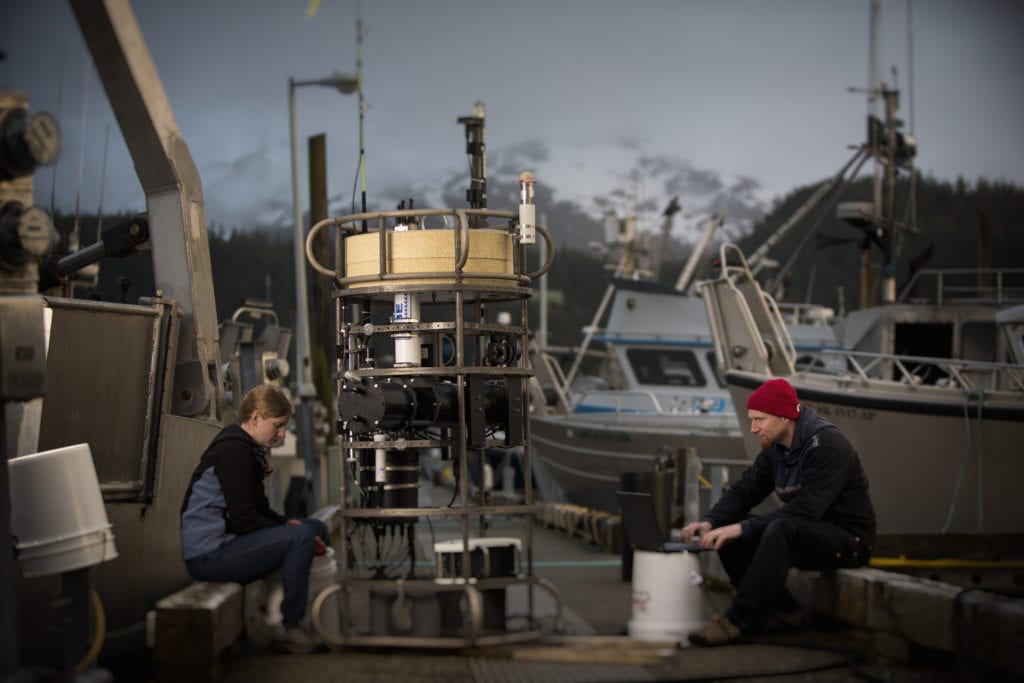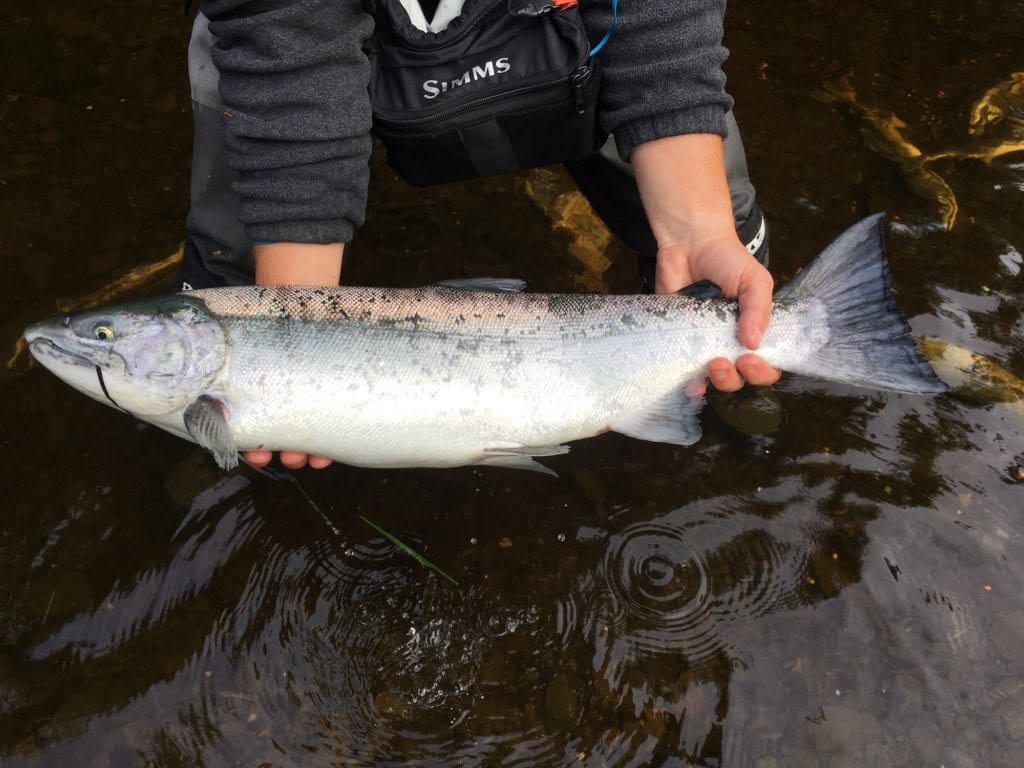
The theme of resilience emanates from the new research plan that the Prince William Sound Science Center adopted this spring. Organized into three major sections, the plan is large enough to encompass existing research programs, as well as areas of intended expansion.
Each section has the potential to not only increase understanding of scientific topics but to benefit the people of the region. This was no accident. The core of the plan was developed by science center staff who solicited input from community members and local organizations who introduced themes like mariculture, emerging fisheries and energy independence.
Ecosystem status
The ecosystem status section focuses on the conditions in an ecosystem and if they are changing over time. For the science center’s research program manager Scott Pegau, this means monitoring and synthesizing, or “taking what we have learned over the years and trying to integrate it and come out with a new understanding of how the ecosystem is operating.”
Much of the monitoring work done by resource management agencies, like the Alaska Department of Fish & Game, is limited by their priorities and funding. Programs like Gulf Watch Alaska, the Herring Research and Monitoring Program and the National Science Foundation’s Long-Term Ecological Research site in the Gulf of Alaska, contribute to a collective data set, providing a basic understanding of long-term ecosystem changes. The research plan suggests maintaining current monitoring efforts, conducting additional surveys whenever possible (especially for development of new fisheries) and continuing to lead the region with the use of new technology.

Ecosystem processes
If ecosystem status tells us that something is changing, ecosystem processes studies focus on how and why it is changing. This is where the science center does most of its work. Understanding the effects of climate change is a current area of study that the plan expands upon.
As glaciers recede, how will ecosystems respond to the changes in freshwater flow that carries nutrients and minerals downstream? How will the new land available after the glacier is gone be colonized?
Understanding and predicting how an ecosystem will respond to change can only be achieved through the understanding of the complex interactions within that environment. Productivity in any level of the food web can affect other levels; ecosystem process studies lead to an understanding of how these interactions play out.

Community resilience
Community resilience depends on understanding of ecosystem status and processes. The local fishery is centered around salmon, which is currently a focus of several research projects and will likely continue to be.
Researchers are especially concerned about the shrinking size of salmon. Why are they getting smaller? Does a smaller body size have an impact on the ability of salmon to make it upstream to spawn?
While ecosystem process studies of salmon can be used by resource managers for better management of this important resource, the community resilience section of the plan moves away from dependence on current resources. It points out that while warming ocean temperatures may reduce the productivity of some species, it is possible that it may provide opportunities for others.
New fisheries and mariculture that could use existing infrastructure are suggested. A section on food security is followed by energy independence, where the science center’s new campus is highlighted for its potential to be a testbed for energy production and self-sufficiency.
At the end of the day, the research plan is intended as a guiding document and not all projects or ideas in it will necessarily be completed. All of the research done by the Prince William Sound Science Center is funded through competitive grants.
Research funding organizations will put out requests for proposals for the types of projects that they have interest in funding, and researchers from the science center write proposals that hopefully match what the funders want.
As Scott likes to say, “We have to feed ourselves.” And it’s a lot of work. He says the national average is somewhere between 8 percent and 15 percent of research proposals get funded. With funders ultimately calling the shots, the researchers at the science center walk the fine line between the projects they want to do, and the ones that are likely to get funding for.





